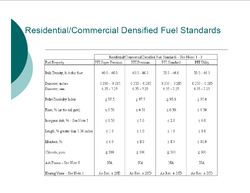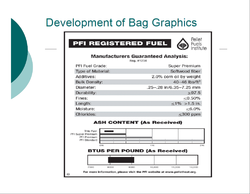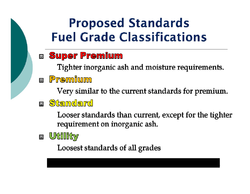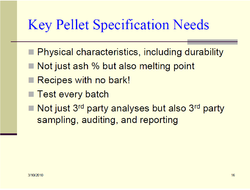I took a look at the PFI site today and noticed its all new. I wasn't able to find the standards listing any more. While browsing I found these(see attachments) which looks like the new standards.
While They don't have anything set in stone yet.
See link here: http://www.pelletheat.org/index.html
Looks like the EPA is getting involved somewhat.
http://pelletfuelresource.com/wp-content/uploads/2010/07/Gil-Wood-EPA.pdf
I really like what was on page 16(see my attachment) About the auditing of the quality. This should help curb the junk on the market. I just hope it doesn't effect the pellet pricing?
While They don't have anything set in stone yet.
See link here: http://www.pelletheat.org/index.html
Looks like the EPA is getting involved somewhat.
Here is his presentation.Mr. Gil Wood of the EPA addressed the PFI Board of Directors
http://pelletfuelresource.com/wp-content/uploads/2010/07/Gil-Wood-EPA.pdf
I really like what was on page 16(see my attachment) About the auditing of the quality. This should help curb the junk on the market. I just hope it doesn't effect the pellet pricing?






